Stonehenge Hoax – Round Monument?
Which could be called the Stonehenge ‘circular argument’? ………(Extract from the Book The Stonehenge Hoax)
Contents
Introduction
The Problem
The traditional view of Stonehenge is of an entirely round monument with lintel stones completing the circle – but there is a massive problem with this theory (and it is ONLY a hypothesis – as nothing has ever been proven), for not all the expected stones holes are present, leading to some experts to suggest that the monument is, in fact, incomplete and was never finished.
The Solution
The original references to Stonehenge were made by William Stukeley FRS, FRCP, FSA (7 November 1687 – 3 March 1765), an Anglican Clergyman and English Antiquarian who pioneered the archaeological investigation of the prehistoric monuments of Stonehenge and Avebury. He was friends with Isaac Newton and was amongst Newton’s first biographers. Stukeley was also involved with Freemasonry and instrumental in British scholarship’s acceptance of Charles Bertram’s forged ‘Description of Britain’.
‘Description of Britain’, also known by its Latin name De Situ Britanniae (“On the Situation of Britain”), was a literary forgery perpetrated by Charles Bertram on the historians of England. It purported to be a 15th-century manuscript by the English monk Richard of Westminster, including information from a lost contemporary account of Britain by a Roman general (dux), new details of the Roman roads in Britain in the style of the Antonine Itinerary, and “an ancient map” as detailed as by Ptolemy. (Stonehenge Hoax – Round Monument?)
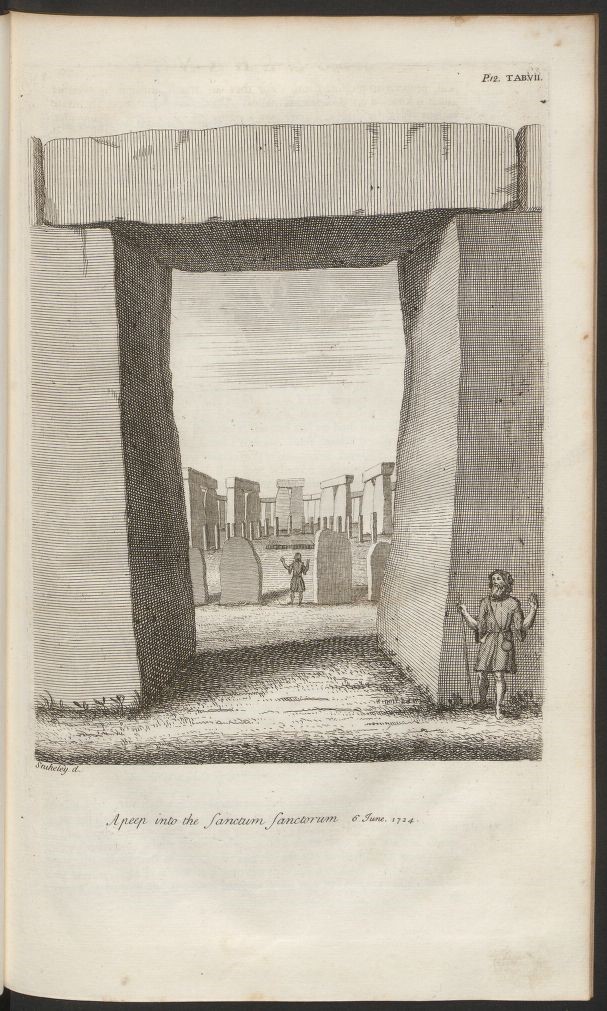
| Stukeley’s Vision of Stonehenge – (Stonehenge Hoax – Round Monument?) |
Bertram disclosed the existence of the work through his correspondence with the antiquarian William Stukeley in 1748, provided him with a “copy”, which was made available, and published in Latin in 1757. By this point, his Richard had become conflated with the historical Richard of Cirencester. The text was treated as a legitimate and significant source of information on Roman Britain from the 1750s through the 19th century, when it was progressively debunked by John Hodgson, Karl Wex, B. B. Woodward, and J. E. B. Mayor. Some tales from the forgery can still be found in peer-reviewed works of British history.
Despite Stukeley’s Anglican faith and church offices, he was obsessed with the idea of Druidism, and he will be remembered as “the greatest of the early forerunners of the discipline of archaeology” – the ‘Father of Archaeology’ for his habit of going out personally with teams of ‘navvies’ to examine, explore (and sadly destroy) many ancient sites in search of lost treasures.
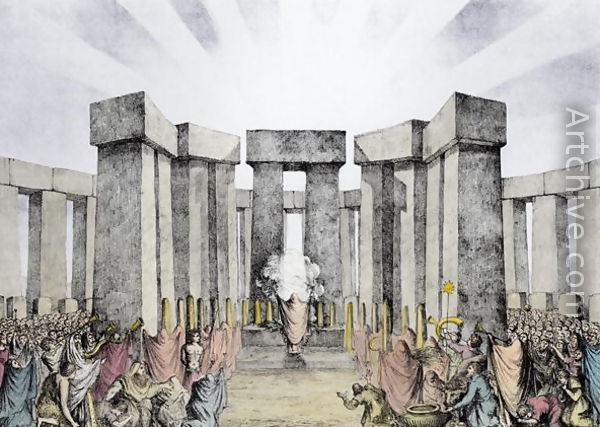
Druids were Sun worshippers, according to the limited accounts which have survived. Their name means ‘Knowing the Oak Tree’, and the oak was a Druidic symbol of the Sun. The ‘mighty oak’ claim to be the king of the forest, which is difficult to dismiss and its strength is legendary. Unfortunately, all their lore and history were committed to memory, never written down, but the symbolism and myths have survived to include reincarnation was at the centre of their ancient faith.
There has been much speculation on the Druidic religion, but in the main, we have only Roman accounts, particularly that of Julius Caesar, on which to rely. Every sign of this popular general’s attempt to translate Druidic gods and customs into his native Roman language would be surprising if a degree of adverse propaganda did not colour his account.(Stonehenge Hoax – Round Monument?)
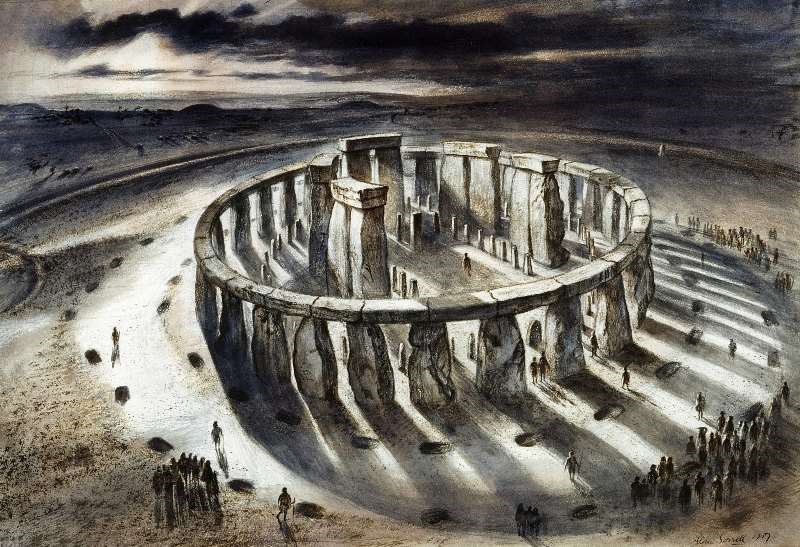
However, Caesar has no hesitation in equating the Druids’ Gods and Goddesses with the astrological gods of Rome. It’s hard to doubt these accomplished priests, with their international connections, recognised the solar majesty worshipped throughout the ancient world with his family of planetary divinities.
Stukeley was attracted to Stonehenge as a Druid, and his excavations in and around the site found Roman pottery and artefacts, which made him believe that the monument was first a Druid Temple that continued as a Roman Sun Temple. The classic shape of a Sun Temple was round (like the Sun), and as three-quarters of Stonehenge survived in a rounded form with the rest of the site ‘robbed out’, therefore there was no problem for Stukeley to imagine the entire site was round and commissioned artists to create drawings of the monument as it would have looked when it was first constructed.
This observation of the monument was complemented as ‘The Avenue’ (a roadway with ditches on either side), he found was aligned towards the Midsummer Solstice – the longest day of the calendar year and therefore a druid festival. (Stonehenge Hoax – Round Monument?)
We can see why the ‘myth’ about Stonehenge being round started – but why does it continue today?
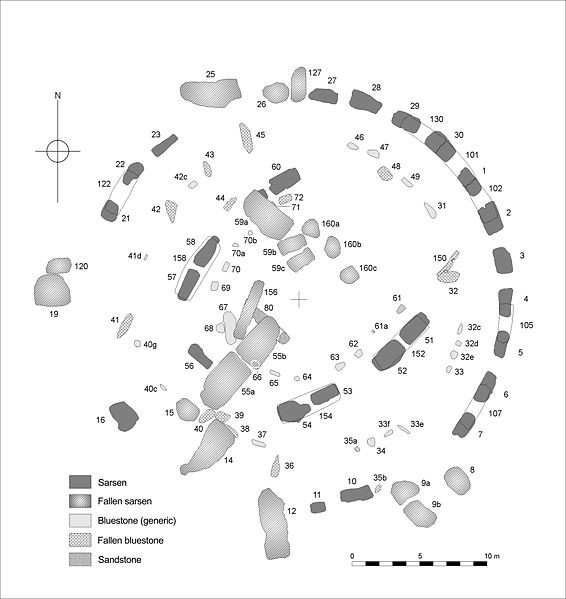
| Stonehenge remaining Stones -(Stonehenge Hoax – Round Monument?) |
Some academics have commented upon the ‘incompleteness’ of the SW quadrant of the structure as it seems to lack the large uprights and lintels that other areas possess. This is compounded as there has been a lack of excavations in this area.
In dry summers, post hole ‘patches’ have been found on the unexcavated sections of Stonehenge that match the predicted missing stone holes, and as a consequence, most archaeologists have felt that to be was sufficient evidence to prove the monument was indeed complete and round as Stukeley first suggested – yet there is a standing stone which defies this belief.
Stone 11 is a strange standing stone that seems to have been in the position since the start of the monument – but is rarely spoken about by the archaeologists or the site experts. For example, in English Heritage’s (EH) book “Stonehenge in its landscape.” cleal et al. (1995) – the equivalent to the bible on Stonehenge by EH, all they say about this unique stone is: “Unexcavated – standing, but possibly broken in antiquity, as it is considerably shorter than the other stones of the circle.”
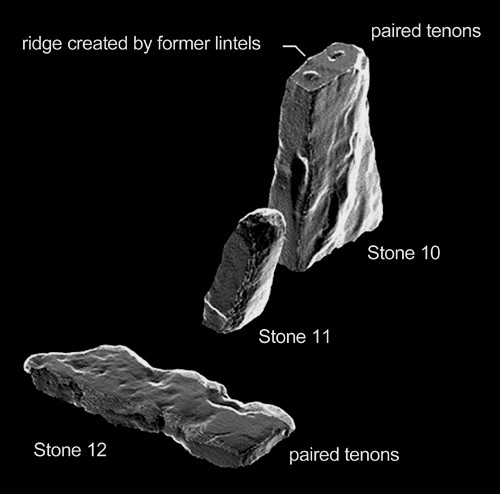
| Stone Hole 13 is the same size as Stone 11 – Stonehenge Hoax |
While it is indeed ‘shorter’ (it is half the size in height) – but moreover, less than 25- 30% the width of the other circle standing stones! Now, we could accept that the top of a stone could have been broken off (but there are no others like that at Stonehenge – so consequently, it’s unique). Moreover, how do you reduce the ‘width’ of a stone by 75% without leaving some signs of alteration like an enlarged base still in the ground?
Furthermore, stone hole 13 is again too small to take a full-sized Sarsen, but it may take a stone of Stone 11 proportions. All the major standing stones of Stonehenge have huge foundation holes because they contain ‘ramps’ next to the stone holes, which were used to lever the stone in place due to their colossal weight. Stone hole 13 showed that it did not have a ramp and was deeper than expected – either this was a ‘badly’ built stone hole, or it was never intended for a larger sarsen stone.
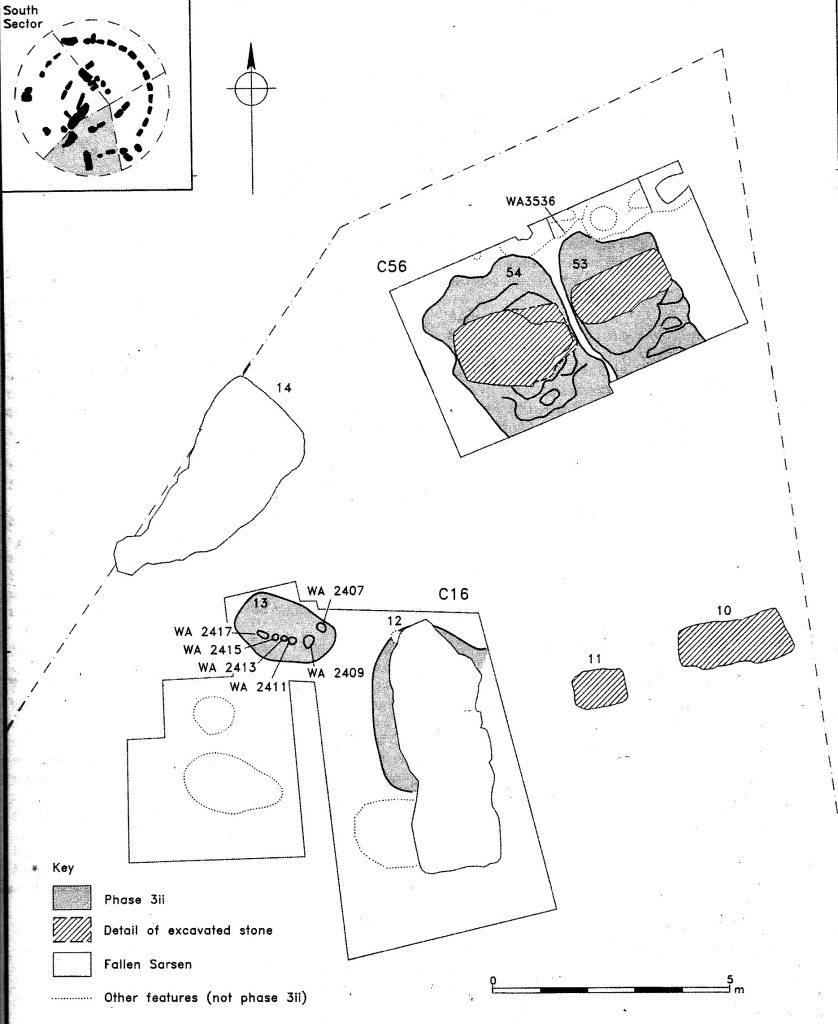
Consequently, the size of unaltered Stone 11 and the Stone hole 13 clearly proves beyond any reasonable doubt that the idea that Stonehenge was a circular monument ‘with lintels’ and standing stones of exact proportions are entirely fabricated and falsely reported by archaeologists.
The truth, the whole truth and nothing but the` truth!
Looking at the existing standing stones in detail, including the excavation reports (remembering only about half of the site has ever been fully excavated), we realise that we have a circular type of stone circle – the SW quadrant stones are missing in some respects. So how does this help us to understand the site and construction?
Another aspect of Stonehenge not discussed in detail is the early (Phase I – you see Phase III currently) monument’s design. Excavations have found a horseshoe arrangement of stone holes that are separated by a constant 2m facing the NW. We are all aware of the NE Solstice sunrise, but few understand that the moon sets in the NW at its northerly position on the horizon.
Stonehenge is also surrounded by other mysterious constructions called ‘Long Barrows’ – in fact, there are as many as eight long barrows within two miles of the Stonehenge site – more Long Barrows in any single location in Britain (or even the world!). Long Barrows are sites our ancestors placed the bones of their dead after they have been ‘defleshed’ by the process known as ‘excarnation’ – this is achieved by leaving the body out in the open. Thus, birds eat the corpse’s flesh (as they were seen as sacred animals as they could fly from the heavens – as seen in Egyptian Archaeology and Mythology).
We traditionally represent (even today) death with the night and the moon, so we can conclude that if this were a site for the dead and excarnation – if a temple were to be constructed, it would naturally reflect an affiliation to the moon. Symbolically, we would historically represent the moon as a ‘crescent shape’ (as we see from flags of the world), which we see on this site from the existing standing stones combined with the smaller stone hole foundations (Stone 11 & 13). Consequently, Stonehenge was never constructed initially as a round stone circle but as a crescent circle to represent death and the journey to the afterlife.
Why is a horseshoe crescent facing the Sun in the monument’s centre?
The giant stone trilithon crescent within the crescent (that faces the Summer Solstice sunrise) is very symbolic – as we have seen in other cultures and belief systems of the ancient world, which frequently represents rebirth or reincarnation.
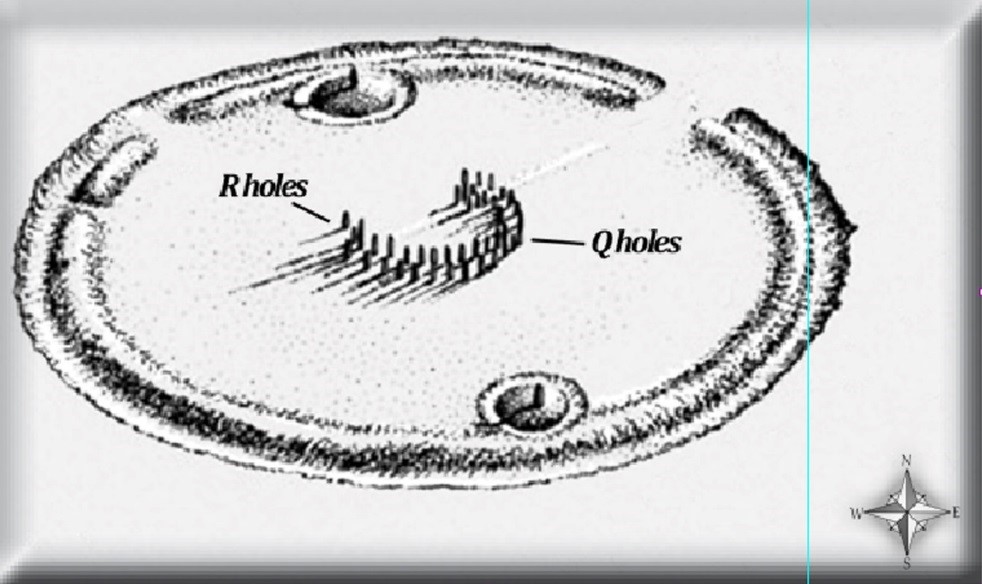
| Phase I of Stonehenge, with Mortuary Stone holes – Stonehenge Hoax |
The same structure can also be used to point to the Midwinter Solstice sunset (which is precisely 180 o in the opposite direction), So the ‘open’ (direction) of the horseshoe points to the Solstice Sunrise, but the ‘main’ and more important direction of the symbol points in the opposite direction, out of the back of the inner horseshoe to the Winter Solstice sunset.
Is this the first indication of how the builders of Stonehenge viewed their world of life and death? The symbolism indicates that the temple is telling us that Stonehenge represents the reincarnation of the soul and the belief in the afterlife.
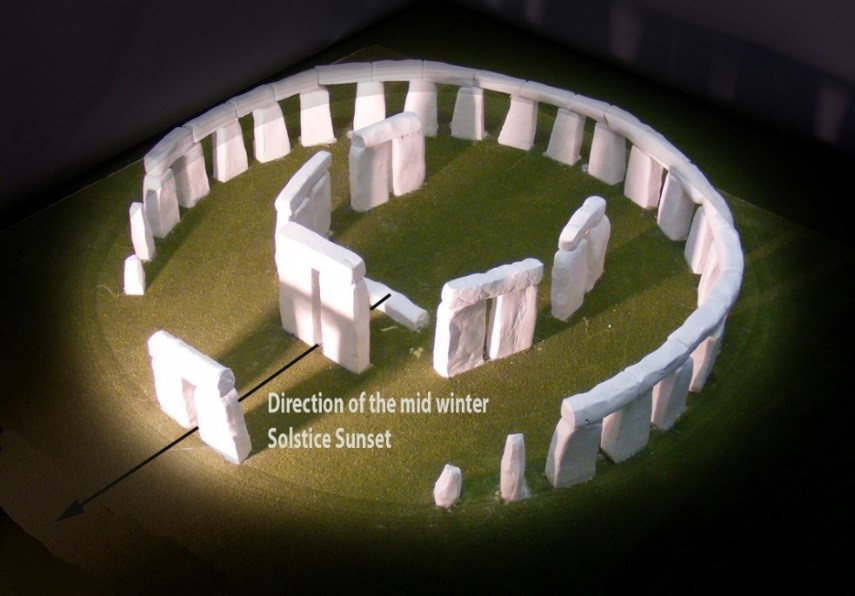
| Stonehenge is a monument to the DEAD and so Crescent Moon shaped – Stonehenge Hoax |
The Stonehenge Hoax Book – 13 Things that don’t make sense about Stonehenge
Introduction
Video
Synopsys
Stonehenge, a timeless enigma etched in stone and earth, has stood as a formidable puzzle challenging the intellects of archaeologists and historians alike. Despite the myriad attempts, including books, TV programs, and academic conferences, the secrets of these ancient stones and their encircling ditches have proven elusive. Against this backdrop, we scrutinise the existing thirteen hypotheses, each presenting its narrative but collectively lacking a coherent thread.
In adopting the deductive reasoning akin to Sherlock Holmes, we endeavour to weave these disparate threads into a unified tapestry that not only unravels the mystery of Stonehenge but also shakes the foundations of established academic narratives. This intellectual journey may induce some discomfort as we challenge conventional perceptions and invite a reevaluation of our understanding of the past. Apologies are extended in advance for any cognitive dissonance, but the pursuit of truth and reason mandates an unfiltered presentation of the facts.
So, fasten your seatbelts for an expedition into the archaeological unknown.
As we navigate this intellectual rollercoaster, be prepared for a revelation that might reshape our understanding of Stonehenge and question the foundations of our historical narratives. The dawn of a new archaeological era awaits promising insights that could leave even the most curious minds astonished. As we delve into this intellectual rabbit hole, be ready for a revelation that could make Alice astonished. (The Stonehenge Hoax)
Robert John Langdon (2023) – (The Stonehenge Hoax)
The Journey
Langdon’s journey was marked by meticulous mapping and years of research, culminating in a hypothesis that would reshape our understanding of prehistoric Britain. He proposed that much of the British Isles had once been submerged in the aftermath of the last ice age, with these ancient sites strategically positioned along the ancient shorelines. His groundbreaking maps offered a fresh perspective, suggesting that Avebury had functioned as a bustling trading hub for our ancient ancestors. This audacious theory challenged the prevailing notion that prehistoric societies were isolated and disconnected, instead highlighting their sophistication in trade and commerce.
In the realm of historical discovery, the audacious thinkers, the mavericks who dare to question established narratives, propel our understanding forward. Robert John Langdon is undeniably one of these thinkers. With a deep passion for history and an unyielding commitment to his research, he has unearthed a hidden chapter in the story of Avebury that transcends the boundaries of time and offers fresh insights into our shared human history.
As Langdon’s trilogy, ‘The Stonehenge Enigma,’ continues to explore these groundbreaking theories, it beckons us to embark on a journey of discovery, to challenge our assumptions, and to embrace the possibility that the past is far more complex and interconnected than we ever imagined. With its ancient stones and enigmatic avenues, Avebury continues to whisper its secrets to those who dare to listen, inviting us to see history through a new lens—one illuminated by the audacious vision of Robert John Langdon.
(The Stonehenge Hoax)
The Book
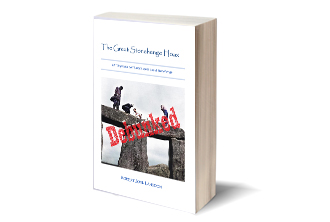
Further Reading
For information about British Prehistory, visit www.prehistoric-britain.co.uk for the most extensive archaeology blogs and investigations collection, including modern LiDAR reports. This site also includes extracts and articles from the Robert John Langdon Trilogy about Britain in the Prehistoric period, including titles such as The Stonehenge Enigma, Dawn of the Lost Civilisation and the ultimate proof of Post Glacial Flooding and the landscape we see today. (AI now Supports – Homo Superior)
Robert John Langdon has also created a YouTube web channel with over 100 investigations and video documentaries to support his classic trilogy (Prehistoric Britain). He has also released a collection of strange coincidences that he calls ‘13 Things that Don’t Make Sense in History’ and his recent discovery of a lost Stone Avenue at Avebury in Wiltshire called ‘Silbury Avenue – the Lost Stone Avenue’.
Langdon has also produced a series of ‘shorts’, which are extracts from his main body of books:
Other Blogs
1
a
- AI now Supports – Homo Superior
- AI now supports my Post-Glacial Flooding Hypothesis
- Alexander the Great sailed into India – where no rivers exist today
- Ancient Prehistoric Canals – The Vallum
- Ancient Secrets of Althorp – debunked
- Antler Picks built Ancient Monuments – yet there is no real evidence
- Antonine Wall – Prehistoric Canals (Dykes)
- Archaeological ‘pulp fiction’ – has archaeology turned from science?
- Archaeological Pseudoscience
- Archaeology in the Post-Truth Era
- Archaeology: A Bad Science?
- Archaeology: A Harbour for Fantasists?
- Archaeology: Fact or Fiction?
- Archaeology: The Flaws of Peer Review
- Archaeology’s Bayesian Mistake: Stop Averaging the Past
- Are Raised Beaches Archaeological Pseudoscience?
- Atlantis Found: The Mathematical Proof That Plato’s Lost City Was Doggerland
- ATLANTIS: Discovery with Dan Snow Debunked
- Avebury Ditch – Avebury Phase 2
- Avebury Post-Glacial Flooding
- Avebury through time
- Avebury’s great mystery revealed
- Avebury’s Lost Stone Avenue – Flipbook
b
- Battlesbury Hill – Wiltshire
- Beyond Stone and Bone: Rethinking the Megalithic Architects of Northern Europe
- BGS Prehistoric River Map
- Blackhenge: Debunking the Media misinterpretation of the Stonehenge Builders
- Brain capacity (Cro-Magnon Man)
- Brain capacity (Cro-Magnon Man)
- Britain’s First Road – Stonehenge Avenue
- Britain’s Giant Prehistoric Waterways
- British Roman Ports miles away from the coast
c
- Caerfai Promontory Fort – Archaeological Nonsense
- Car Dyke – ABC News PodCast
- Car Dyke – North Section
- CASE STUDY – An Inconvenient TRUTH (Craig Rhos Y Felin)
- Case Study – River Avon
- Case Study – Woodhenge Reconstruction
- Chapter 2 – Craig Rhos-Y-Felin Debunked
- Chapter 2 – Stonehenge Phase I
- Chapter 2 – Variation of the Species
- Chapter 3 – Post Glacial Sea Levels
- Chapter 3 – Stonehenge Phase II
- Chapter 7 – Britain’s Post-Glacial Flooding
- Cissbury Ring through time
- Cro-Magnons – An Explainer
d
- Darwin’s Children – Flipbook
- Darwin’s Children – The Cro-Magnons
- Dawn of the Lost Civilisation – Flipbook
- Dawn of the Lost Civilisation – Introduction
- Digging for Britain – Cerne Abbas 1 of 2
- Digging for Britain Debunked – Cerne Abbas 2
- Digging Up Britain’s Past – Debunked
- DLC Chapter 1 – The Ascent of Man
- Durrington Walls – Woodhenge through time
- Dyke Construction – Hydrology 101
- Dykes Ditches and Earthworks
- DYKES of Britain
e
f
g
h
- Hadrian’s Wall – Military Way Hoax
- Hadrian’s Wall – the Stanegate Hoax
- Hadrian’s Wall LiDAR investigation
- Hambledon Hill – NOT an ‘Iron Age Fort’
- Hayling Island Lidar Maps
- Hidden Sources of Ancient Dykes: Tracing Underground Groundwater Fractals
- Historic River Avon
- Hollingsbury Camp Brighton
- Hollows, Sunken Lanes and Palaeochannels
- Homo Superior – Flipbook
- Homo Superior – History’s Giants
- How Lidar will change Archaeology
i
l
m
- Maiden Castle through time
- Mathematics Meets Archaeology: Discovering the Mesolithic Origins of Car Dyke
- Mesolithic River Avon
- Mesolithic Stonehenge
- Minerals found in Prehistoric and Roman Quarries
- Mining in the Prehistoric to Roman Period
- Mount Caburn through time
- Mysteries of the Oldest Boatyard Uncovered
- Mythological Dragons – a non-existent animal that is shared by the World.
o
- Offa’s Dyke Flipbook
- Old Sarum Lidar Map
- Old Sarum Through Time…………….
- On Sunken Lands of the North Sea – Lived the World’s Greatest Civilisation.
- OSL Chronicles: Questioning Time in the Geological Tale of the Avon Valley
- Oswestry LiDAR Survey
- Oswestry through time
- Oysters in Archaeology: Nature’s Ancient Water Filters?
p
- Pillow Mounds: A Bronze Age Legacy of Cremation?
- Post Glacial Flooding – Flipbook
- Prehistoric Burial Practices of Britain
- Prehistoric Canals – Wansdyke
- Prehistoric Canals – Wansdyke
- Prehistoric Canals (Dykes) – Great Chesters Aqueduct (The Vallum Pt. 4)
- Prehistoric Canals (Dykes) – Hadrian’s Wall Vallum (pt 1)
- Prehistoric Canals (Dykes) – Offa’s Dyke (Chepstow)
- Prehistoric Canals (Dykes) – Offa’s Dyke (LiDAR Survey)
- Prehistoric Canals (Dykes) – Offa’s Dyke Survey (End of Section A)
- Prehistoric Canals (Dykes) – Wansdyke (4)
- Prehistoric Canals Wansdyke 2
- Professor Bonkers and the mad, mad World of Archaeology
r
- Rebirth in Stone: Decrypting the Winter Solstice Legacy of Stonehenge
- Rediscovering the Winter Solstice: The Original Winter Festival
- Rethinking Ancient Boundaries: The Vallum and Offa’s Dyke”
- Rethinking Ogham: Could Ireland’s Oldest Script Have Begun as a Tally System?
- Rethinking The Past: Mathematical Proof of Langdon’s Post-Glacial Flooding Hypothesis
- Revolutionising History: Car Dyke Unveiled as Prehistoric & the Launch of FusionBook 360
- Rising Evidence, Falling Rivers: The Real Story of Europe’s First Farmers
- Rivers of the Past Were Higher: A Fresh Perspective on Prehistoric Hydrology
s
- Sea Level Changes
- Section A – NY26SW
- Section B – NY25NE & NY26SE
- Section C – NY35NW
- Section D – NY35NE
- Section E – NY46SW & NY45NW
- Section F – NY46SE & NY45NE
- Section G – NY56SW
- Section H – NY56NE & NY56SE
- Section I – NY66NW
- Section J – NY66NE
- Section K – NY76NW
- Section L – NY76NE
- Section M – NY87SW & NY86NW
- Section N – NY87SE
- Section O – NY97SW & NY96NW
- Section P – NY96NE
- Section Q – NZ06NW
- Section R – NZ06NE
- Section S – NZ16NW
- Section T – NZ16NE
- Section U – NZ26NW & NZ26SW
- Section V – NZ26NE & NZ26SE
- Silbury Avenue – Avebury’s First Stone Avenue
- Silbury Hill
- Silbury Hill / Sanctuary – Avebury Phase 3
- Somerset Plain – Signs of Post-Glacial Flooding
- South Cadbury Castle – Camelot
- Statonbury Camp near Bath – an example of West Wansdyke
- Stone me – the druids are looking the wrong way on Solstice day
- Stone Money – Credit System
- Stone Transportation and Dumb Censorship
- Stonehenge – Monument to the Dead
- Stonehenge Hoax – Dating the Monument
- Stonehenge Hoax – Round Monument?
- Stonehenge Hoax – Summer Solstice
- Stonehenge LiDAR tour
- Stonehenge Phase 1 — Britain’s First Monument
- Stonehenge Phase I (The Stonehenge Landscape)
- Stonehenge Solved – Pythagorean maths put to use 4,000 years before he was born
- Stonehenge Stone Transportation
- Stonehenge Through Time
- Stonehenge, Doggerland and Atlantis connection
- Stonehenge: Discovery with Dan Snow Debunked
- Stonehenge: The Worlds First Computer
- Stonehenge’s The Lost Circle Revealed – DEBUNKED
t
- Ten Reasons Why Car Dyke Blows Britain’s Earthwork Myths Out of the Water
- Ten Things You Didn’t Know About Britain’s Prehistoric Flooded Past
- Ten thousand year old boats found on Northern Europe’s Hillsides
- Ten thousand-year-old boats found on Northern Europe’s Hillsides
- The “Hunter-Gatherer” Myth: Why It’s Time to Bury This Outdated Term
- The Ancient Mariners – Flipbook
- The Ancient Mariners – Prehistoric seafarers of the Mesolithic
- The Beringian Migration Myth: Why the Peopling of the Americas by Foot is Mathematically and Logistically Impossible
- The Bluestone Enigma
- The Cro-Magnon Cover-Up: How DNA and PR Labels Erased Our Real Ancestry
- The Dolmen and Long Barrow Connection
- The Durrington Walls Hoax – it’s not a henge?
- The First European Smelted Bronzes
- The Fury of the Past: Natural Disasters in Historical and Prehistoric Britain
- The Giant’s Graves of Cumbria
- The Giants of Prehistory: Cro-Magnon and the Ancient Monuments
- The Great Antler Pick Hoax
- The Great Chichester Hoax – A Bridge too far?
- The Great Dorchester Aqueduct Hoax
- The Great Farming Hoax – (Einkorn Wheat)
- The Great Farming Migration Hoax
- The Great Hadrian’s Wall Hoax
- The Great Iron Age Hill Fort Hoax
- The Great Offa’s Dyke Hoax
- The Great Prehistoric Migration Hoax
- The Great Stone Transportation Hoax
- The Great Stonehenge Hoax
- The Great Wansdyke Hoax
- The Henge and River Relationship
- The Logistical Impossibility of Defending Maiden Castle
- The Long Barrow Mystery
- The Long Barrow Mystery: Unraveling Ancient Connections
- The Lost Island of Avalon – revealed
- The Maiden Way Hoax – A Closer Look at an Ancient Road’s Hidden History
- The Maths – LGM total ice volume
- The Mystery of Pillow Mounds: Are They Really Medieval Rabbit Warrens?
- The Old Sarum Hoax
- The Oldest Boat Yard in the World found in Wales
- The Perils of Paradigm Shifts: Why Unconventional Hypotheses Get Branded as Pseudoscience
- The Post-Glacial Flooding Hypothesis – Flipbook
- The Post-Glacial Flooding Theory
- The Problem with Hadrian’s Vallum
- The Rise of the Cro-Magnon (Homo Superior)
- The Roman Military Way Hoax
- The Silbury Hill Lighthouse?
- The Stonehenge Avenue
- The Stonehenge Avenue
- The Stonehenge Code: Unveiling its 10,000-Year-Old Secret
- The Stonehenge Enigma – Flipbook
- The Stonehenge Enigma: What Lies Beneath? – Debunked
- The Stonehenge Hoax – Bluestone Quarry Site
- The Stonehenge Hoax – Flipbook
- The Stonehenge Hoax – Moving the Bluestones
- The Stonehenge Hoax – Periglacial Stripes
- The Stonehenge Hoax – Station Stones
- The Stonehenge Hoax – Stonehenge’s Location
- The Stonehenge Hoax – The Ditch
- The Stonehenge Hoax – The Slaughter Stone
- The Stonehenge Hoax – The Stonehenge Layer
- The Stonehenge Hoax – Totem Poles
- The Stonehenge Hoax – Woodhenge
- The Stonehenge Hospital
- The Subtropical Britain Hoax
- The Troy, Hyperborea and Atlantis Connection
- The Vallum @ Hadrian’s Wall – it’s Prehistoric!
- The Vallum at Hadrian’s Wall (Summary)
- The Woodhenge Hoax
- Three Dykes – Kidland Forest
- Top Ten misidentified Fire Beacons in British History
- Troy Debunked
- TSE – DVD Barrows
- TSE DVD – An Inconvenient Truth
- TSE DVD – Antler Picks
- TSE DVD – Avebury
- TSE DVD – Durrington Walls & Woodhenge
- TSE DVD – Dykes
- TSE DVD – Epilogue
- TSE DVD – Stonehenge Phase I
- TSE DVD – Stonehenge Phase II
- TSE DVD – The Post-Glacial Hypothesis
- TSE DVD Introduction
- TSE DVD Old Sarum
- Twigs, Charcoal, and the Death of the Saxon Dyke Myth
w
- Wansdyke – Short Film
- Wansdyke East – Prehistoric Canals
- Wansdyke Flipbook
- Wansdyke LiDAR Flyover
- Wansdyke: A British Frontier Wall – ‘Debunked’
- Was Columbus the first European to reach America?
- White Sheet Camp
- Why a Simple Fence Beats a Massive Dyke (and What That Means for History)
- Windmill Hill – Avebury Phase 1
- Winter Solstice – Science, Propaganda and Indoctrination
- Woodhenge – the World’s First Lighthouse?

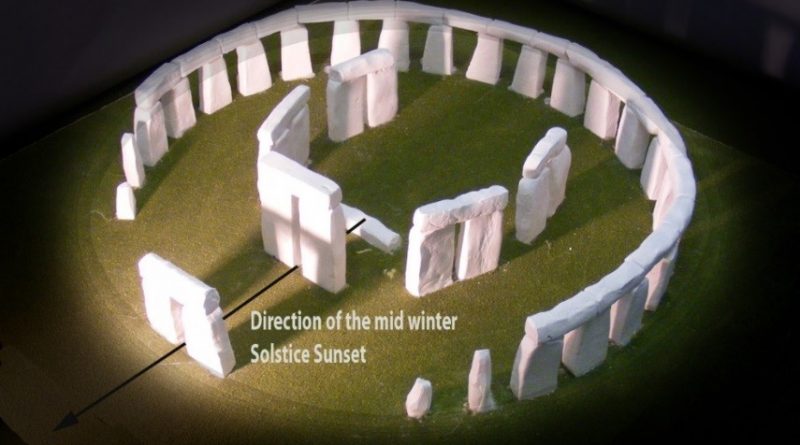

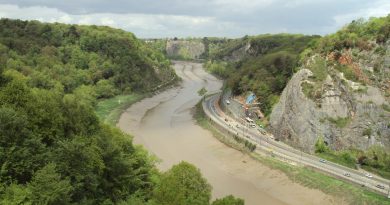

Pingback: Rediscovering the Winter Solstice: The Original Winter Festival - Prehistoric Britain